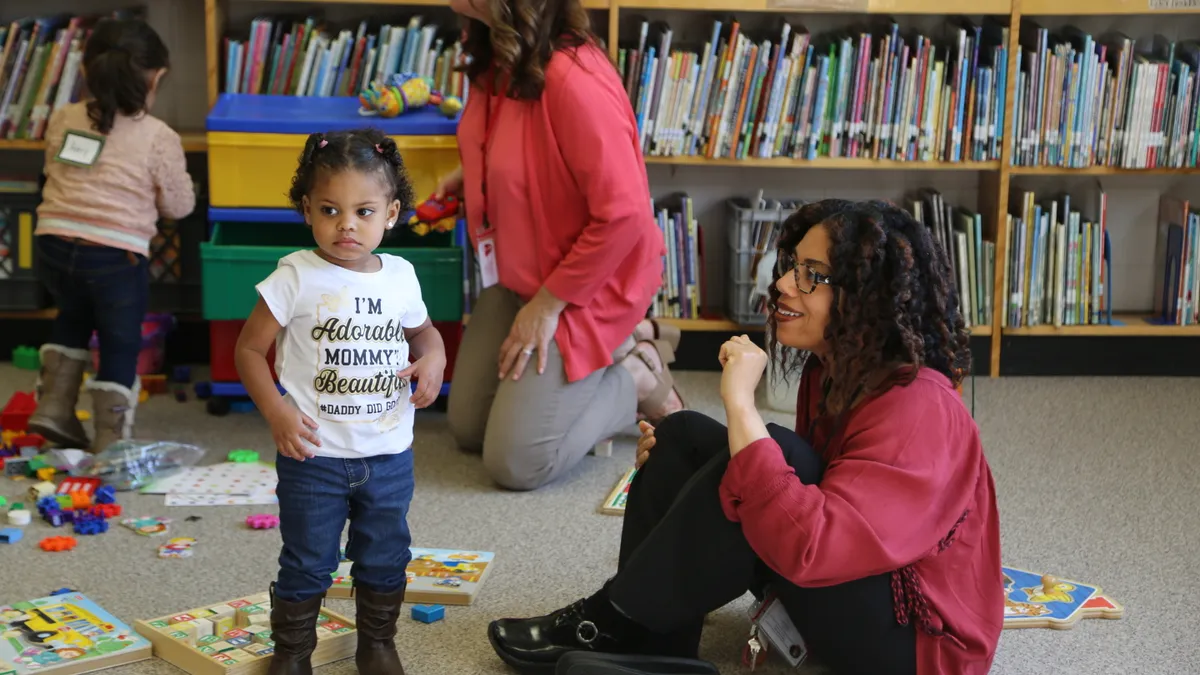Dive Brief:
- Schools in the suburbs of Omaha, Nebraska, are reframing early education so it begins at birth and lasts the first eight years of childhood, during the most critical time for neural development when early interventions have the biggest impact, EdSurge reports.
- School leaders at the 11 Nebraska school districts taking part in the Superintendents’ Early Childhood Plan now think of infants and toddlers as part of the school community and reach out to families early.
- The district invested in the program — the largest birth-to-grade-3 model in the country — by hiring early childhood education employees who conduct home visits and connect families to schools through funds from a $2.5 million annual tax measure.
Dive Insight:
Early intervention goes a long way toward preventing developmental delays seen in students as young as pre-K. The Parent-Child Home Program (PCHP) sends early-learning specialists to low-income families for 30-minute visits twice a week, starting when a child is 18 months old.
Sarah Walzer, CEO of ParentChild+, said reaching families before students enter school has a “transformative” effect, citing data showing those in the program were 50% more likely to be ready for kindergarten, and 30% were more likely to graduate from high school. Another 50% were less likely to be identified for an Individualized Education Program later.
The trend is spreading. More than 700 communities now have programs that support young students in a program modeled after Teacher Home Visits, a Sacramento-based nonprofit. Head Start, a free pre-K program for children from low-income families, conducts similar home visits. Funding is a hurdle. Most home visits are funded by Title I, but some schools must also rely on grants, state funding or other means.
It’s almost too simple for some decisionmakers to grasp, according to Stacey Vanhoy, the Dallas director of Stand for Children, an education advocacy group. Yet the results show these programs drop absenteeism rates, and students who received home visits early were more likely to be proficient on the English Language Arts assessment.












